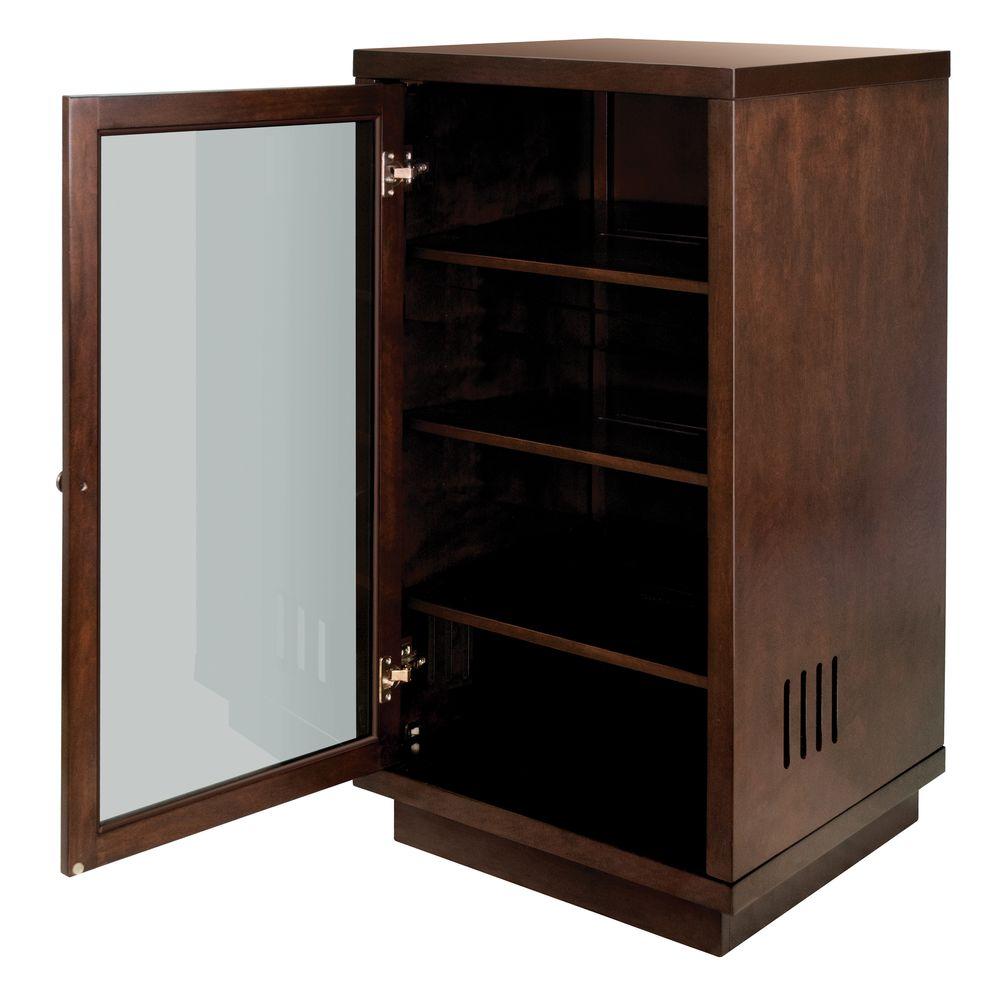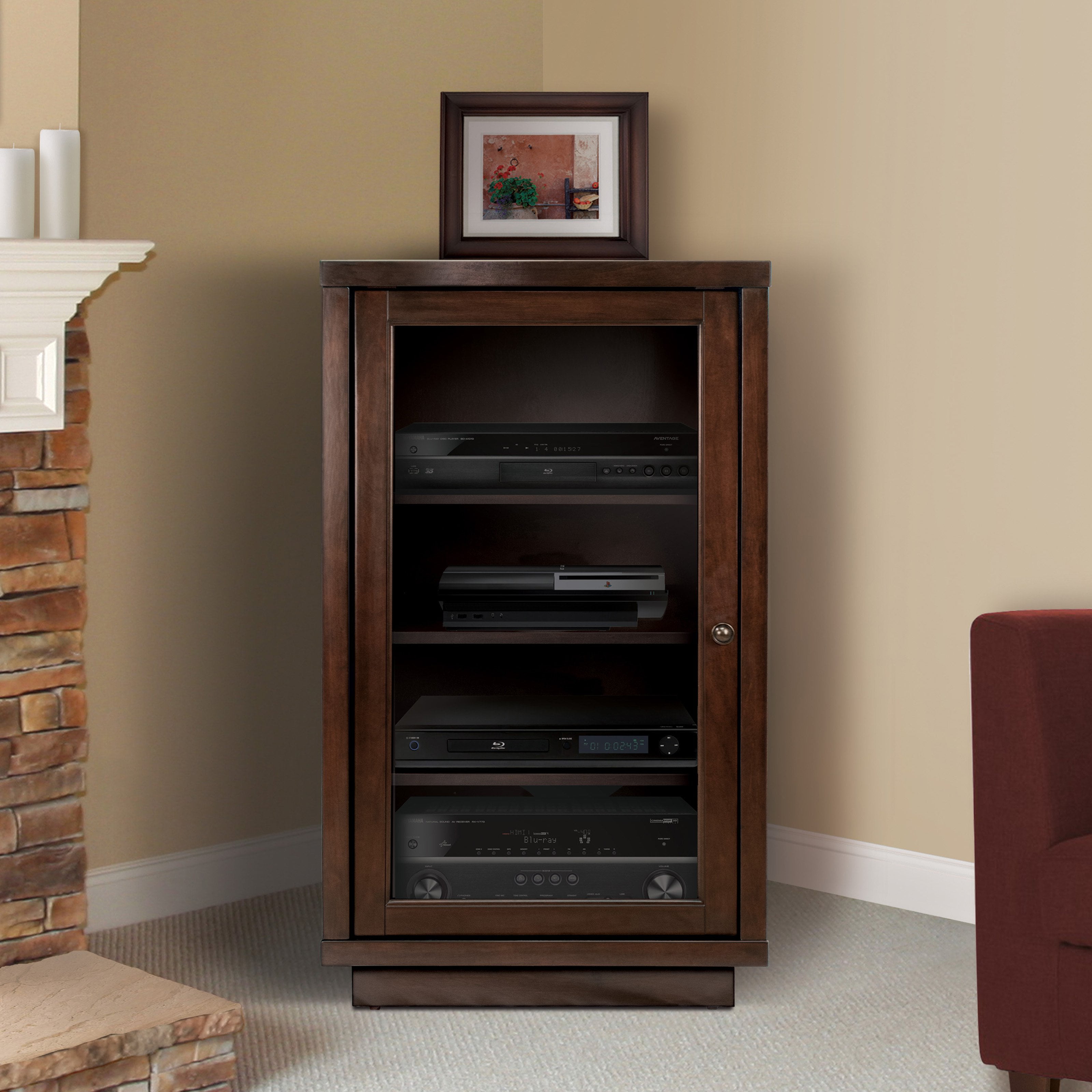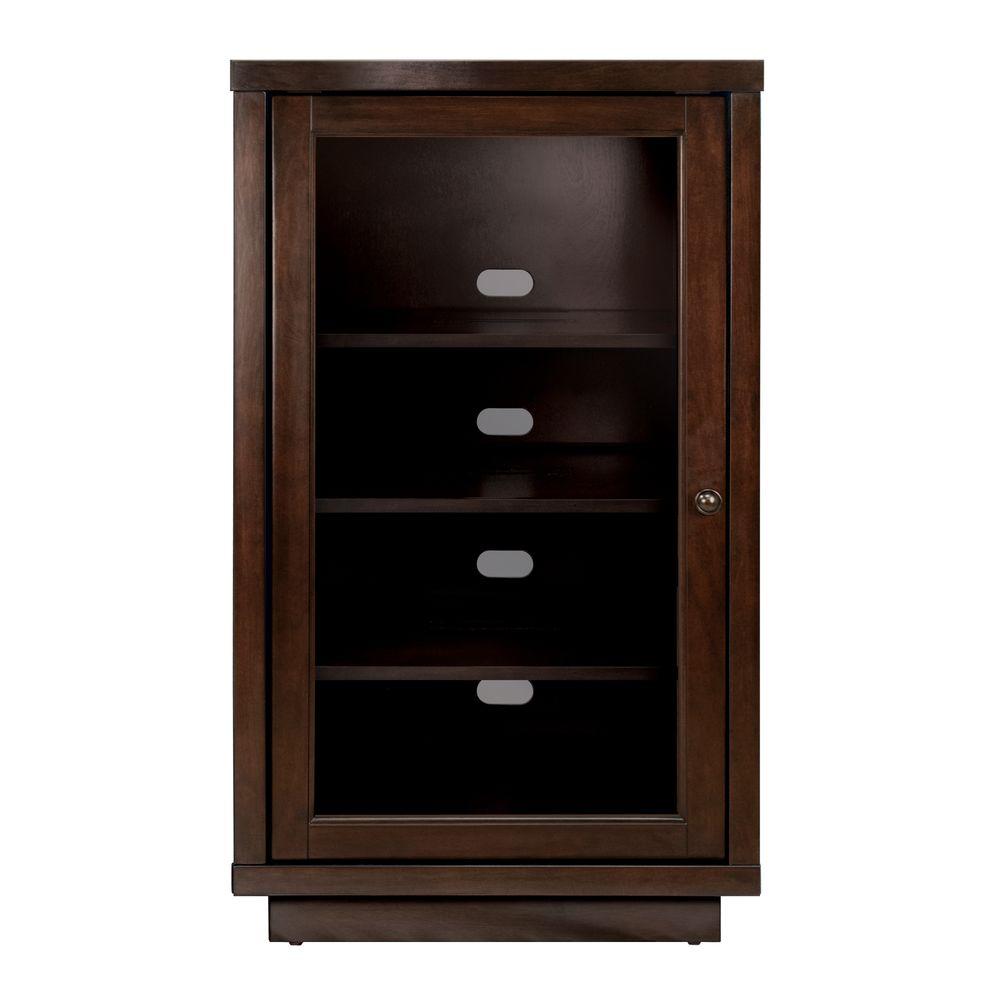Types of Small Audio Video Cabinets

Small audio video cabinets are essential for organizing and showcasing your entertainment systems, and the market offers a diverse range of options to suit different needs and aesthetics. Choosing the right cabinet depends on factors such as the size of your equipment, the available space, and your desired style.
Materials Used in Small Audio Video Cabinets
The material used in a cabinet significantly impacts its durability, appearance, and price. Here are some common materials:
- Wood: Wood is a classic choice for audio video cabinets, offering warmth, durability, and a wide range of finishes. Popular wood types include oak, cherry, maple, and walnut. These woods can be stained or painted to match your décor.
- Metal: Metal cabinets, often made from steel or aluminum, are known for their modern aesthetic, durability, and resistance to scratches and dents. They can be powder-coated in various colors to complement different room styles.
- Glass: Glass cabinets offer a sleek and contemporary look, showcasing your equipment and adding a touch of elegance. However, they may be more prone to scratches and fingerprints.
- Plastic: Plastic cabinets are lightweight, affordable, and come in various colors and styles. While they may not be as durable as wood or metal, they are suitable for smaller setups or budget-conscious consumers.
Features of Small Audio Video Cabinets
Small audio video cabinets are designed to accommodate various equipment and offer specific features to enhance functionality and aesthetics.
- Shelves: Adjustable shelves allow you to customize the cabinet’s interior to fit your specific equipment, ensuring a secure and organized arrangement.
- Drawers: Drawers provide additional storage space for accessories, remote controls, and other items, keeping your setup tidy and organized.
- Cable Management: Many cabinets incorporate cable management features such as integrated cable channels or grommets, helping to conceal wires and maintain a clean appearance.
- Ventilation: Openings or vents in the cabinet allow for proper airflow, preventing overheating of electronic devices.
- Locking Mechanism: Some cabinets offer locking mechanisms to secure your valuable equipment, providing an extra layer of protection.
Styles of Small Audio Video Cabinets
Small audio video cabinets come in a variety of styles to match different interior designs.
- Traditional: Traditional cabinets typically feature classic designs, often made from wood with intricate carvings or embellishments. They are ideal for classic or formal settings.
- Modern: Modern cabinets embrace clean lines, minimalist designs, and often incorporate metal or glass elements. They are well-suited for contemporary or industrial-style spaces.
- Contemporary: Contemporary cabinets blend modern and traditional elements, creating a balanced and sophisticated look. They are versatile and can complement a wide range of interior styles.
- Rustic: Rustic cabinets are characterized by their natural wood finishes and distressed textures. They are perfect for adding a touch of warmth and character to a space.
Popular Small Audio Video Cabinet Designs
Here are some popular small audio video cabinet designs with their unique characteristics:
- Entertainment Center: These cabinets often include multiple shelves, drawers, and a built-in TV stand, providing a complete entertainment solution.
- Media Console: Media consoles are sleek and minimalist cabinets designed to hold audio-visual equipment and accessories. They often feature open shelves for display and drawers for storage.
- Wall-Mounted Cabinet: Wall-mounted cabinets are space-saving solutions that offer a clean and modern look. They are ideal for small spaces and can be customized to fit your specific needs.
- Corner Cabinet: Corner cabinets maximize space by utilizing often overlooked areas. They can be used to house audio-visual equipment or display decorative items.
Factors to Consider When Choosing a Small Audio Video Cabinet
When selecting a small audio video cabinet, consider the following factors:
- Size and Dimensions: Measure your equipment and the available space to ensure the cabinet fits comfortably and accommodates all your devices.
- Style and Design: Choose a cabinet that complements your existing décor and personal style.
- Features: Consider features like shelves, drawers, cable management, and ventilation to meet your specific needs.
- Material: Select a material that aligns with your budget and desired durability, appearance, and maintenance requirements.
- Budget: Determine your budget and explore cabinets within your price range.
Features and Functionality: Small Audio Video Cabinet

Small audio-video cabinets, despite their compact size, are meticulously designed to optimize audio-visual experiences. These cabinets are not just storage units; they are engineered to enhance the performance and aesthetics of your entertainment system.
Storage Capacity
Storage capacity is a critical aspect of any audio-video cabinet, particularly for smaller spaces. The ability to accommodate a range of devices, including TVs, soundbars, gaming consoles, and receivers, is paramount. Efficiently designed cabinets maximize storage space by utilizing vertical compartments, shelves, and drawers.
- Depth and Width: A cabinet’s depth and width directly influence the size of the equipment it can hold. Deeper cabinets can accommodate larger TVs and receivers, while wider cabinets offer more space for multiple components.
- Shelving and Drawers: Adjustable shelves allow you to customize storage for different devices. Drawers provide a secure and dust-free environment for smaller items like remotes, cables, and accessories.
- Open Compartments: Open compartments provide easy access to frequently used devices, while also showcasing components that contribute to the aesthetics of the room.
Cable Management
Unruly cables can detract from the visual appeal of any entertainment setup. Well-designed audio-video cabinets feature integrated cable management systems to keep wires organized and concealed.
- Cable Pass-Throughs: These strategically placed openings allow cables to be routed neatly through the cabinet, minimizing clutter.
- Cable Ties and Clips: Built-in cable ties and clips provide a secure and organized way to bundle and manage cables.
- Cable Management Panels: Some cabinets include dedicated panels with compartments for storing and organizing cables.
Ventilation
Adequate ventilation is essential for preventing overheating and ensuring optimal performance of audio-video equipment.
- Vented Back Panels: Openings in the back panel allow for airflow, dissipating heat generated by electronic components.
- Side Vents: Side vents provide additional airflow, especially for cabinets with closed backs.
- Raised Base: A raised base creates space for air circulation underneath the cabinet, preventing heat buildup.
Display Options, Small audio video cabinet
Display options enhance the aesthetic appeal and functionality of small audio-video cabinets.
- Glass Doors: Glass doors showcase your audio-video equipment while protecting it from dust and scratches.
- Open Shelves: Open shelves provide a minimalist and modern look, highlighting your entertainment system.
- Integrated Lighting: Some cabinets feature built-in LED lighting, accentuating the display and creating a visually appealing ambience.
Considerations for Choosing a Small Audio Video Cabinet

Choosing the right small audio video cabinet is crucial for optimizing your home entertainment setup. It needs to be a blend of practicality and aesthetics, seamlessly integrating with your existing décor while accommodating your equipment.
Factors to Consider When Selecting a Small Audio Video Cabinet
Several factors play a crucial role in selecting the ideal small audio video cabinet. Understanding these factors will guide you towards a cabinet that perfectly meets your needs.
- Size and Dimensions: The size of the cabinet is paramount. Measure the available space in your entertainment area to ensure the cabinet fits comfortably without overwhelming the room. Remember to factor in the dimensions of your equipment, including TVs, receivers, and speakers, leaving enough room for ventilation and easy access.
- Budget: Small audio video cabinets come in a wide range of prices. Define your budget upfront and explore options within that range. While expensive cabinets may offer premium materials and features, there are budget-friendly alternatives that deliver excellent value.
- Compatibility with Existing Equipment: Ensure the cabinet is compatible with your existing equipment. Check the cabinet’s internal dimensions and shelf spacing to accommodate your components, including their weight and size.
- Aesthetics: The cabinet should complement your existing décor. Consider the style, finish, and color of the cabinet to ensure it blends seamlessly with your entertainment space.
Tips for Measuring the Space and Selecting a Cabinet
Accurate measurements are essential to ensure a perfect fit.
- Measure Twice, Cut Once: Before purchasing a cabinet, measure the available space where you plan to place it. Measure the width, depth, and height, leaving some clearance for ventilation and ease of access.
- Consider the Weight of Your Equipment: Ensure the cabinet is sturdy enough to support the weight of your equipment. Look for cabinets with reinforced shelves and strong construction.
- Prioritize Functionality: Choose a cabinet with features that meet your needs, such as adjustable shelves, cable management systems, and ventilation openings.
Small Audio Video Cabinet Brands and Features
The market offers a variety of small audio video cabinets catering to diverse needs and budgets. Here’s a table showcasing popular brands and their key features:
| Brand | Key Features | Price Range | Target Audience |
|---|---|---|---|
| Sonos | Sleek design, integrated speakers, wireless connectivity, compact size | $400 – $1,000 | Music lovers, tech-savvy users, small space dwellers |
| IKEA | Affordable, customizable, simple design, various sizes | $50 – $300 | Budget-conscious buyers, minimalist aesthetics, small spaces |
| B&W | Premium materials, high-end audio performance, elegant design, spacious interiors | $1,000 – $5,000 | Audiophiles, luxury home theaters, discerning consumers |
| Klipsch | Integrated speakers, powerful sound, sleek design, multiple configurations | $500 – $2,000 | Music enthusiasts, home theater enthusiasts, those seeking immersive audio |
Small audio video cabinet – While small audio-video cabinets excel at discreetly housing electronics, their aesthetic appeal often falls short. For a visually striking display, consider a waffle cone display cabinet instead. This unique cabinet, with its playful design, can add a touch of whimsy to any space, while still providing a functional platform for showcasing your prized possessions.
In contrast, small audio-video cabinets prioritize practicality over visual impact, making them a more functional but less exciting choice.
Small audio-video cabinets are often overlooked, relegated to the background of entertainment setups. However, these cabinets can be much more than just storage spaces. By incorporating visually appealing features, such as cabinet hardware display boards , you can transform a basic cabinet into a stylish focal point.
These boards allow for the showcase of decorative hardware, adding a touch of elegance and personality to the overall design. This simple addition can elevate the aesthetic of your audio-video cabinet, turning it into a statement piece within your entertainment space.